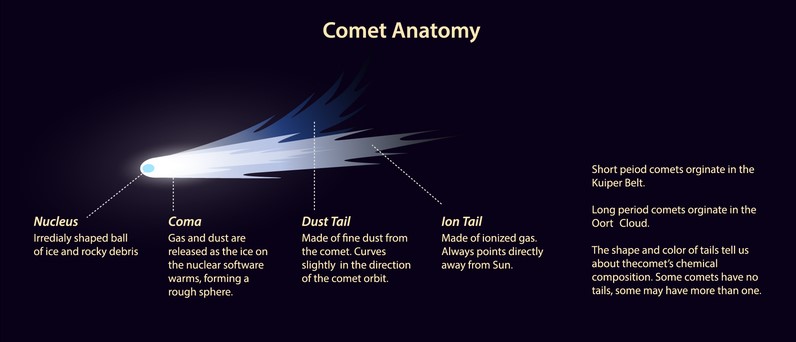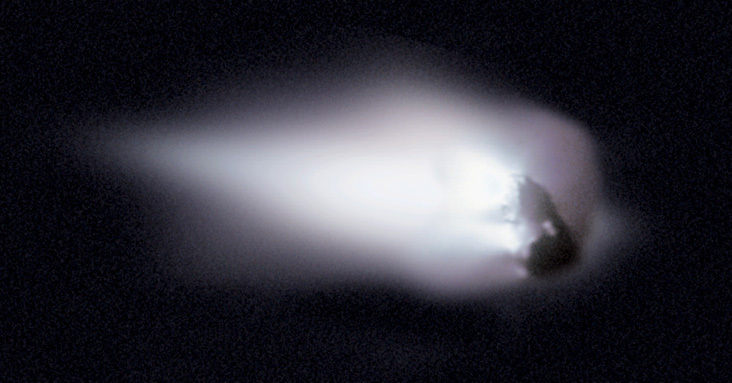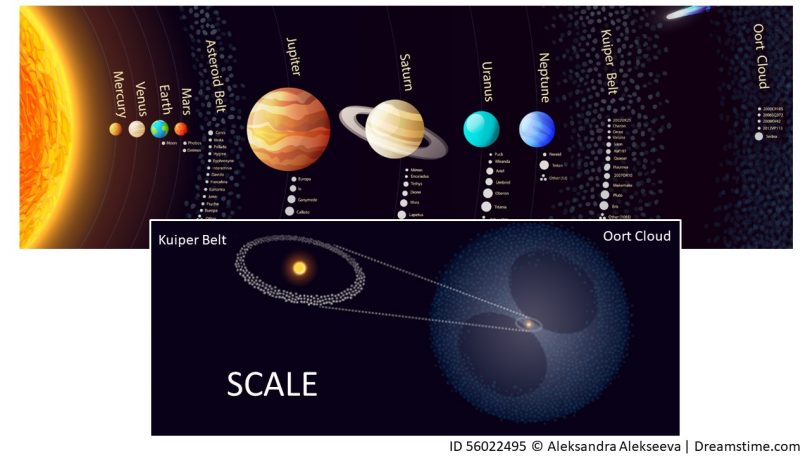Comets testify a young solar system as they cannot burn billions of tons of materials with each passing of the sun and be billions of years old…as a solution to this evolutionary paradox the Oort Cloud has been theorized. An area deep in space where comets accumulate material. But this place only exists as drawings and has never been observed.

Carl Sagan wrote: “Many scientific papers are written each year about the Oort Cloud, its properties, its origin, its evolution. Yet there is not yet a shred of direct observational evidence for its existence.1”
Perhaps the most famous comet is Halley’s Comet which was last witnessed in earth’s sky in 1986. The comet passes the earth on average every 76 years. Halley’s size on its last passage of earth was approximately 9.3 X 5 miles. Scientists estimate that the comet loses about 3 to 10 feet of volume off its surface with each orbit of the sun and theorize that the meteor will eventually dissipate into dust.2 The comet is estimated to be completely gone after another approximately 2,300 orbits or 174,800 years.3
Such basic math shows the weakness of evolutionary time lines (of billions of years) and the direct conflict that exists by the very presence of comets. Comets don’t last even 1 million years! Therefore, the “save” claims that all comets seen today were originally rouge (floating randomly beyond our solar system) only to be later, like all comets we see today, by pure miraculous serendipity, was captured by our solar systems gravitational field. To add more fuel to this mathematical dumpster fire there are 6,619 known comets in our solar system today.4 Random chance of gathering rouge comets violates common sense.

1 Carl Sagan, Ann Druyan, “Comet”, 1985, Chapter 11
2 https://solarsystem.nasa.gov/asteroids-comets-and-meteors/comets/1p-halley/in-depth/
3 http://adsabs.harvard.edu/full/1985MNRAS.213..103H
4 Johnston, William Robert (13 July 2019). “Known populations of solar system objects”. JohnstonsArchive.net. Retrieved 13 November 2019.


